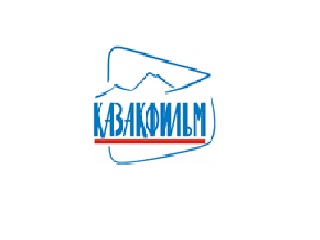
There in the reading hall of the Arts department is organized the book exhibition “Kazakfilm” kinostudiyasyna – 80 zhyl” within the framework of the 30-th anniversary of Independence of the Republic of Kazakhstan.
There in the reading hall of the Arts department is organized the book exhibition “Kazakfilm” kinostudiyasyna – 80 zhyl” within the framework of the 30-th anniversary of Independence of the Republic of Kazakhstan.
In 1934 there was organized the Almatinskaya studio of cinemachronicles, in 1936 there were released the first documentary films. In 1939 there at “Lenfilm” cinema studio was shot the first Kazakh feature film “Amangeldy”. On September 12, 1941 on the basis of the Decree of the Council of people’s commissars of the Kazakh SSR №762 there was created the Alma-Atinskaya cinema studio of feature films.
On November 15, 1941 the Alma-Atinskaya cinema studio merged with the cinema studios “Mosfilm” and “Lenfilm” evacuated to Kazakhstan into the Central United cinema studio of feature films – TsOKS, which worked in Alma-Ata to 1944 and released during the years of the Great Patriotic war 80% of all Soviet feature films. It was headed by Mikhail Tikhonov.
On January 25, 1944 the cinema studio was renamed into the Alma-Atinskaya cinema studio of feature and chronicle films.
From 1945 to 1952 there at the cinema studio were shot three films – “The songs of Abai”, “The golden horn” and “Dzhambul”.
On January 9, 1960 there by the order of the Ministry of culture of the Kazakh SSR the Alma-Atinskaya cinema studio of feature and and chronicle films was renamed into the cinema studio “Kazakhfilm”. In January, 1963 there took place the First Founding congress of the Union of cinematographists of Kazakhstan, First secretary was chosen
Shaken Kenzhetayevich Aimanov.
In 1967 there in Kazakhstan started the production of multiplication films. The first Kazakh multfilm was the work of Amen Khaidarov “Why the swallow’s tail is in the form of horns”. Before 1968 the cinema studio was in the building of the Palace of culture , where at the present time is situated the Kazakh state philharmonic society after Zhambyl. In 1968-1981 there for the cinmena studio was built the new complex of buildings in the southern part of the city with the total area of 19 square hectares.
In 1984 there to the cinema studio “Kazakhfilm” was given the name of the outstanding figure of national cinematography Shaken Kenzhetayevich Aimanov.
The main activity of the cinema studio is the production of the play, documentary and animation films, and also the dubbing of foreign films into the Kazakh language.
The cinema studio “Kazakhfilm” nurtured up several generations of talented actors, directors, operators, artists. The names of such masters like Shaken Aimanov, Makhit Begalin, Sultan-Akhmet Khodzhikov, Abdullah Karsakbayev are written in golden letters in the history of the cinema studio.
In the period from 2008 up to now more than 200 pictures of “Kazakhfilm” cinema studio participated in more than 220 festivals and international demonstrations in 60 countries of the world. During the 80 years there at “Kazakhfilm” were created more than 600 cinema films, 1133 documentary and 139 animation films. There into the golden fond of domestic films enter such films like “Our lovely doctor”, ”The angel in the skull-cap”, “The end of the ataman”, “Kyz Zhibek”, “The girl-zhigit”, “My name is Kozha ”, “Alsar-Kose”, “The needle”, “The racketeer”. Annually there into the demonstration come out more than 10 films.
The directors of the cinema studio “Kazakhfilm” from 1953 to 2021 were: Shaken Aimanov, Azerbaizhan Mambetov, Ardak Amirkulov, Sergei Azimov, Anar Kashaganova, Ermek Amanshayev, Bakhyt Kayirbekov, Asenov Arman, Akhan Satayev.
The purpose of the exhibition is the advancement of national values, the popularization of domestic cinema industry, cinema art and cinematography.
The achievements of the cinema studio on the way of its establishment and development are reflected in the books, which narrate about the first steps of domestic cinematography, the activity of the cinema studio, the scenarios of the films: A. Nazarov “The firstling of the Kazakh cinema” of “Kazakfilm” cinema studio after Shaken Aimanov, “The photo-album”, “The cinema of Kazakhstan” of B. Nogerbekov and others. Also there for the readers will be of interest the articles from periodical editions and the illustrative material.
We invite everybody to the book exhibition!



![Баннер 1 [EN]](images/29.04.2024/БАННЕР_КІТАП_ШОУ_2024.png)
![Баннер 2 [EN]](images/29.04.2024/1.jpeg)
![Баннер 3 [EN]](images/29.04.2024/3.jpeg)
![Баннер 4 [en]](images/29.04.2024/2.jpeg)
![Баннер 5 [EN]](images/29.04.2024/4.jpeg)
![Баннер 6 [EN]](images/29.04.2024/5.jpeg)
![Баннер 7 [EN]](images/29.04.2024/6.jpeg)



